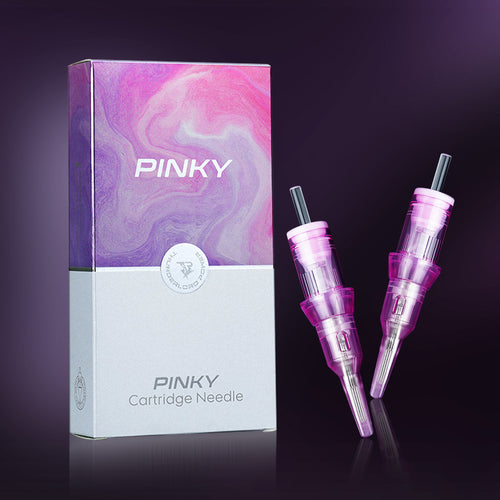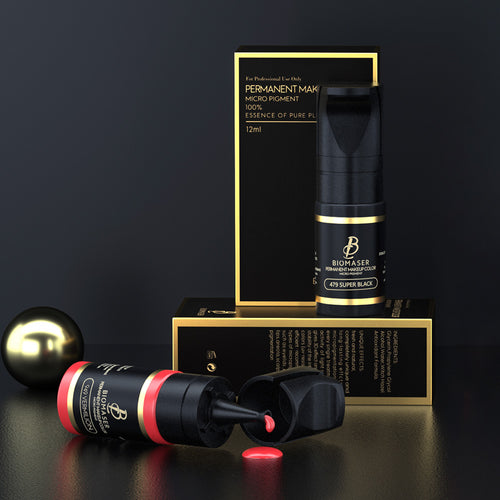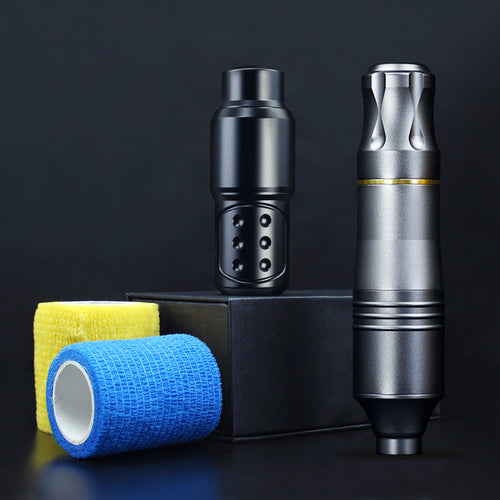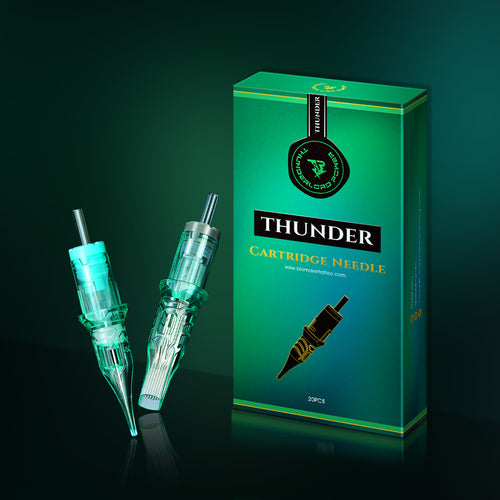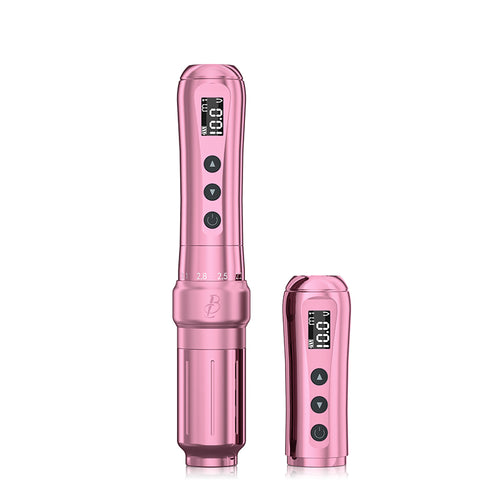How to Clean and Maintenance Tattoo Machine?

Maintaining a tattoo machine can ensure both the safety of your clients and the longevity and performance of your equipment. Proper cleaning and regular maintenance not only help prevent infections and cross-contamination but also keep your machine running smoothly, delivering precise and consistent results every time. In this article, we'll lead you through why it's essential to keep your tattoo machine in top shape and the tools and supplies you'll need, as well as provide step-by-step instructions on cleaning and maintaining your machine effectively. Whether you're a seasoned professional or new to the craft, these tips will help you uphold the highest standards of hygiene and performance in your tattooing practice.
Why Cleaning and Maintenance are So Important?
Importance of Hygiene
A clean tattoo pen is critical for preventing infections and cross-contamination, which can pose serious health risks to your clients. Bloodborne pathogens and other contaminants can easily spread if equipment is not properly sanitized after each use. Ensuring that every component of your tattoo machine is thoroughly cleaned and disinfected helps create a safe environment for both you and your clients.
Longevity and Performance
Regular maintenance significantly impacts the longevity and performance of your tattoo machine. By consistently caring for your tattoo machine gun, you can prevent wear and tear that might otherwise lead to costly repairs or replacements. Well-maintained machines operate more efficiently, providing consistent power and precision, which translates to better results in your artwork. Regular upkeep ensures that your machine remains in peak condition, allowing you to deliver high-quality tattoos every time.

What Tools and Supplies Do You Need?
Basic Cleaning Supplies
- Disinfectants: Use high-quality disinfectants that are effective against bloodborne pathogens. Ensure they are suitable for use on metal and plastic parts.
- Ultrasonic Cleaner: An ultrasonic cleaner uses ultrasonic waves to remove dirt, ink residue, and grime from small, intricate parts of the tattoo machine, ensuring a thorough clean.
- Brushes: Small brushes, like those used for cleaning jewelry or dental tools, are perfect for scrubbing hard-to-reach areas.
- Wipes and Cloths: Disposable disinfectant wipes and lint-free cloths are ideal for wiping down surfaces and components after cleaning.
Having these basic supplies on hand will make the cleaning process more efficient and effective.
Maintenance Supplies
In addition to cleaning supplies, keeping your tattoo machine well-maintained requires a few specialized tools and products:
- Lubricants: Regularly lubricating moving parts ensures smooth operation and reduces wear. Choose a lubricant designed for precision equipment.
- Replacement Parts: Keep spare parts such as springs, O-rings, and rubber bands available. Replacing worn-out components promptly can prevent bigger issues.
- Screwdrivers and Allen Wrenches: These tools are necessary for disassembling and reassembling your tattoo machine. Ensure you have the correct sizes for your specific model.
- Magnifying Glass: A magnifying glass can be helpful for inspecting small parts closely for signs of wear or damage.
Equipping yourself with these maintenance supplies not only helps in performing routine upkeep but also prepares you to handle minor repairs efficiently, keeping your tattoo machine in optimal working order.
Step-by-Step Cleaning Process
Step1: Disassembling the Tattoo Machine

The first step in cleaning your tattoo machine is to carefully disassemble it. This allows you to access and thoroughly clean each component. Follow these general steps, but always refer to your machine's manual for specific instructions:
- Safety First: Begin by ensuring that your hands are clean and gloved to maintain a sterile environment.
- Power Off: Unplug your machine or remove the power source to prevent any accidental activation.
- Disassemble Carefully: Using the appropriate screwdrivers and tools, slowly take apart the machine. Keep track of all small components and screws by placing them on a clean, organized surface.
Taking your time during this process helps prevent damage and makes reassembly easier.
Step2: Cleaning Each Component

Once disassembled, you can start cleaning each pa
rt of the professional tattoo machine:
- Coils and Armature Bar: Gently scrub these parts with a brush dipped in disinfectant. Be sure to reach into all crevices where ink and grime might accumulate.
- Tube and Needle: These components should be separated and cleaned thoroughly. Use specialized brushes to clean inside tubes, and ensure needles are either disposed of properly or sterilized if they are reusable.
- Springs and Screws: Soak these smaller parts in disinfectant for a few minutes before scrubbing them gently with a small brush.
- Wipe Down: Use disinfectant wipes to clean larger surfaces and parts, ensuring no residue is left behind.
Be meticulous in cleaning each component to avoid cross-contamination and ensure all parts are free from ink and debris.
Step3: Using an Ultrasonic Cleaner
An ultrasonic cleaner is highly effective for removing stubborn residues from intricate parts:
- Preparation: Fill the ultrasonic cleaner with the recommended solution, typically a mix of water and a few drops of mild detergent or disinfectant.
- Placement: Place the disassembled parts into the cleaner's basket, ensuring they don't touch each other to avoid scratching.
- Cleaning Cycle: Turn on the cleaner and let it run for the recommended time, usually around 10-15 minutes. The ultrasonic waves will dislodge any remaining particles.
- Rinse and Dry: After the cycle, rinse the parts with distilled water to remove any cleaning solution residue, then dry them thoroughly with a lint-free cloth.
Using an ultrasonic cleaner ensures that even the smallest and hardest-to-reach areas of your tattoo machine are spotless.
Step-by-Step Maintenance Process
Step 1: Inspecting Parts for Wear and Tear
- Visual Inspection: Check components like coils, armature bars, and springs for cracks, bends, or rust.
- Functionality Test: Move parts manually to ensure smooth motion. Stiffness could mean lubrication or replacement is needed.
- Magnified Examination: Use a magnifying glass to spot minor damages.
Step 2: Lubricating Moving Parts
- Choose the Right Lubricant: Pick a lubricant safe for precision equipment that doesn't leave sticky residues.
- Apply Sparingly: Use a small brush to apply a thin layer of lubricant to moving parts like springs and hinges.
- Distribute Evenly: Operate parts or run the machine briefly (without ink) to spread the lubricant.
- Wipe Excess: Remove any excess lubricant with a clean cloth to prevent dirt buildup.
Step 3: Reassembling the Tattoo Machine
- Organized Workspace: Lay out all cleaned and dried parts in an organized manner.
- Follow Manual: Refer to your machine's manual for reassembly instructions, starting with larger parts first.
- Tighten Securely: Use appropriate tools to tighten screws and fasteners securely.
- Test Function: Test the reassembled machine on a practice surface to ensure it operates smoothly.
Keeping Your Tattoo Machine Clean
Maintaining a clean and well-functioning tattoo machine kit is essential for client safety and the quality of your work. Regular cleaning prevents infections and ensures your machine runs smoothly, while consistent maintenance extends its lifespan. By staying organized, using high-quality products, documenting your routines, and keeping up with industry best practices, you can provide a professional service and achieve better results.
Incorporating these cleaning and maintenance routines into your daily, weekly, and monthly schedules will protect your clients and enhance your work. Prioritize cleanliness and care for your equipment to see improvements in client satisfaction and the longevity of your tattoo machine. Start these practices today to ensure your tools are always reliable and efficient.
FAQ
Q1: How often should I clean my tattoo machine?
Clean your digital tattoo machine after every use to keep it hygienic and prevent cross-contamination. Do a quick wipe-down with disinfectant right after each session, then give it a more thorough cleaning at the end of the day. Once a week, do a deep clean, and check everything thoroughly once a month.
Q2: Can I use household cleaners for my tattoo machine?
No, household cleaners aren't suitable for tattoo machines. They might not kill all the germs you need to worry about and could leave residues that harm your equipment or irritate your skin. Stick to cleaners made specifically for medical or tattoo equipment.




